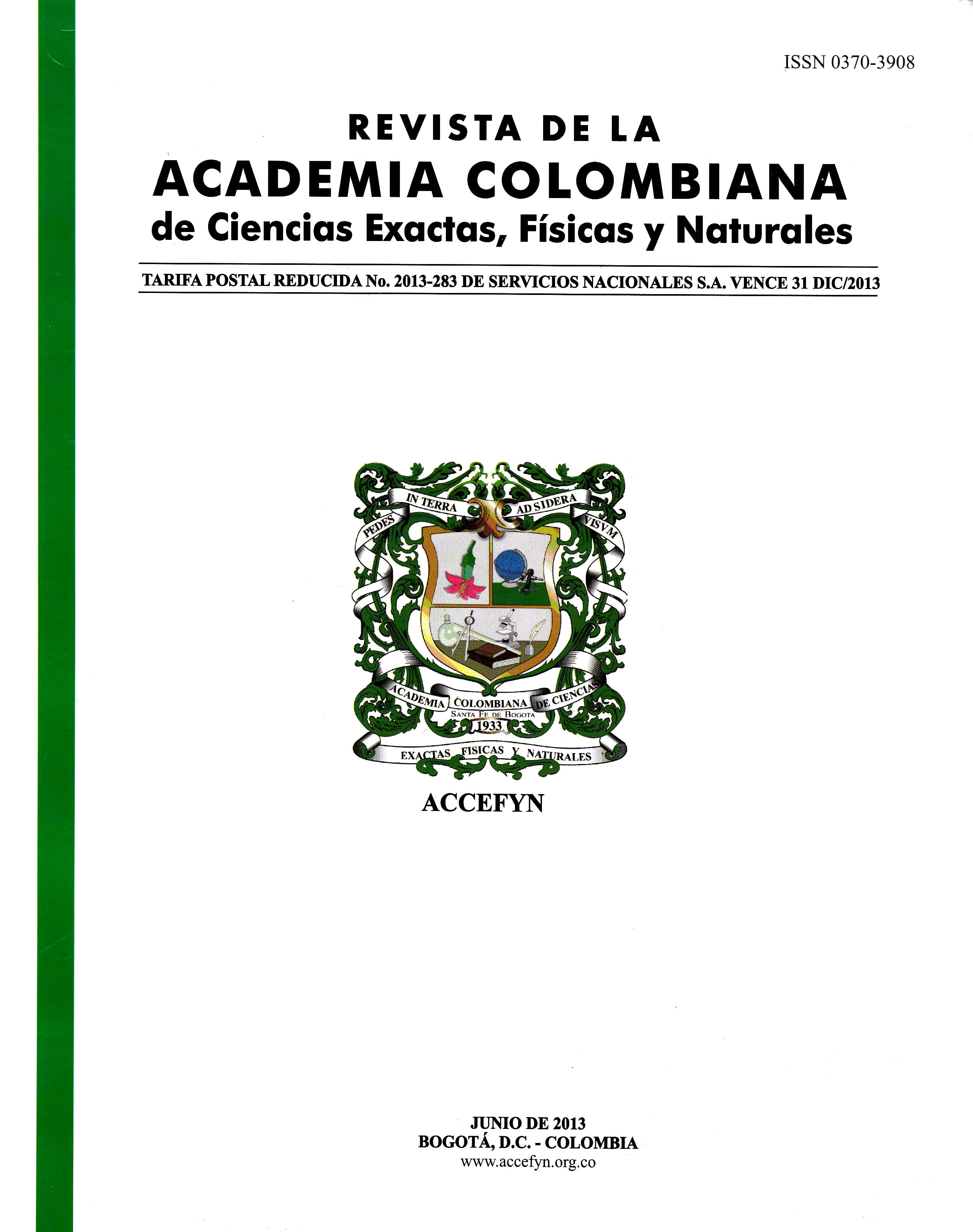Resumen
La relación causa-efecto entre la temperatura global como indicadora del cambio climático en el planeta con algunos de los principales mecanismos forzantes (concentración de CO2 atmosférico, irradiación solar y actividad volcánica) es analizada en este artículo mediante el análisis de series de tiempo para el periodo 1610-1990 AD, comparando la relación entre las tendencias y la variabilidad en los espectros de frecuencia. La temperatura parece acoplarse a la tendencia del CO2 para el último siglo, pero no se encontró una relación de causa-efecto en esta escala de tiempo. El análisis de frecuencias indica una concordancia entre irradiación y temperatura para un periodo de 22 años. El volcanismo presenta una relación inversa con la temperatura mejor observada para una escala decadal.
Referencias
Bradley, RS. & Jonest, PD. 1993. ‘Little Ice Age’ summer temperature variations: their nature and relevance to recent global warming trends. The Holocene 3(4): 367-376.
Burch DE, Gryvnak, DA. & Patty, RR. 1968. Absorption of infrared radiation by CO2 and H2O. Ii. Absorption by CO2 between 8000 And 100000 cm-1(1-1.25 Microns). J. Opt. Soc. Am. 58(3): 335-340.
Dickinson, RE. 1975. Solar variability and the lower atmosphere. Bulletin of the American Meteorological Society 56(12): 1240-1248.
Friis-Christensen, E & Lassen, K. 1991. Length of the solar cycle: An indicator of solar activity closely associated with climate. Science 254(5032): 698-700.
Gerlach, T. 1991. Present-day CO2 emissions from volcanoes. Transactions of the American Geophysical Union (EOS) 72(23): 254-255.
Houghton, JT., Ding, Y., Griggs, DJ., Noguer, M., van der Linden, PJ., Dai, X., Makell, K., Johnson, CA. 2001. Climate Change 2001: The Scientific Basis. Contribution of Working Group I to the Third Assessment Report of the Intergovernmental Panel on Climate Change. Cambridge University Press. 94 p.
Hughes, MK & Diaz, HF. 1994. Was there a Medieval Warm Period’, and if so, where and when?. Climatic Change 26(2): 109-142.
Idso, SB. 1998. CO2-Induced Global Warming: A Skeptic's View of Potential Climate Change, Clim Res 10(1): 69-82.
IPCC, Technical Summary. 2007. Climate Change 2007: The Physical Science Basis. Working Group I Contribution to the Intergovernmental Panel on Climate Change Fourth Assessment Report.
Jones, PD & Mann, ME. 2004. Climate over past millennia. Reviews of Geophysics 42: 1-42.
Jones, TJ, Osborn, & Briffa, KR. 2001. The evolution of climate over the last millennium. Science 292: 662-666.
Joos, F. & Spahni, R. 2008. Rates of change in natural and anthropogenic radiative forcing over the past 20,000 years. Proceedings of the National Academy of Sciences 105(5): 1425-1430.
Karl, TR. & Trenberth, KE. 2003. Modern global climate change. Science 302(5651): 1719-1723.
Lean, J., Beer, J. & Bradley, R. 1995. Reconstruction of solar irradiance since 1610: Implications for climate change. Geophysical Research Letters 22: 3195-3198.
Mann, ME., Bradley, RS. & Hughes, MK. 1998. Global scale temperature patterns and climate forcing over the past six centuries. Nature 3922: 779-787.
Mann, ME., Zhang, Z., Hughes, MK., Bradley, RS., Miller, SK., Rutherford, S. & Ni, F. 2008. Proxy-based reconstructions of hemispheric and global surface temperature variations over the past two millennia, Proceedings of the National Academy of Sciences 105(36): 13252-13257.
Maunder, EW. 1904. Note on the distribution of sun-spots in heliographic latitude, 1874-1902. Monthly Notices of the Royal Astronomical Society 64: 747-761.
Telford, R., Heegaard, E., Birks, H. 2004. All age–depth models are wrong: but how badly?. Quaternary Science Review 23: 1-5.
Ruddiman, WF. 2003. The anthropogenic greenhouse era began thousands of years ago. Climatic Change 61: 261-293.
Shaviv, NJ. 2005. On climate response to changes in the cosmic ray flux and radiative budget, Journal of Geophysical Research, 110: A8.
Siegenthaler, U., Stocker, T., Monnin, E., Lüthi, D., Schwander J., Stauffer, B., Raynaud D., Barnola, JM., Fischer, H., Masson-Delmotte, V., Jouzel, J. 2005. Stable Carbon Cycle-Climate Relationship During the Late Pleistocene. Science 310(5752): 1313-1317.
Svensmark, H. 1998. Influence of cosmic rays on earth’s climate, Phys. Rev. Lett. 81(22): 5027-5030.
Telford, R. Heegaard E, Birks H. 2004. All age–depth models are wrong: but how badly?. Quaternary Sciencie Review 23: 1-5.
van Hoof, TB., Wagner-Cremer, F., Kurschner, WM. & Visscher, H. 2008. A role for atmospheric CO2 in preindustrial climate forcing. Proceedings of the National Academy of Sciences, 105(41): 15815-15818.
Wallace, JM. & Hobbs, PV. 1977. Atmospheric Science: An Introductory Survey, Academic Press, 504 p.
Wunsch, C. 1996. The ocean circulation inverse problem. Cambrige, University Press 442 p.

Esta obra está bajo una licencia internacional Creative Commons Atribución-NoComercial-SinDerivadas 4.0.
Derechos de autor 2023 https://creativecommons.org/licenses/by-nc-nd/4.0

